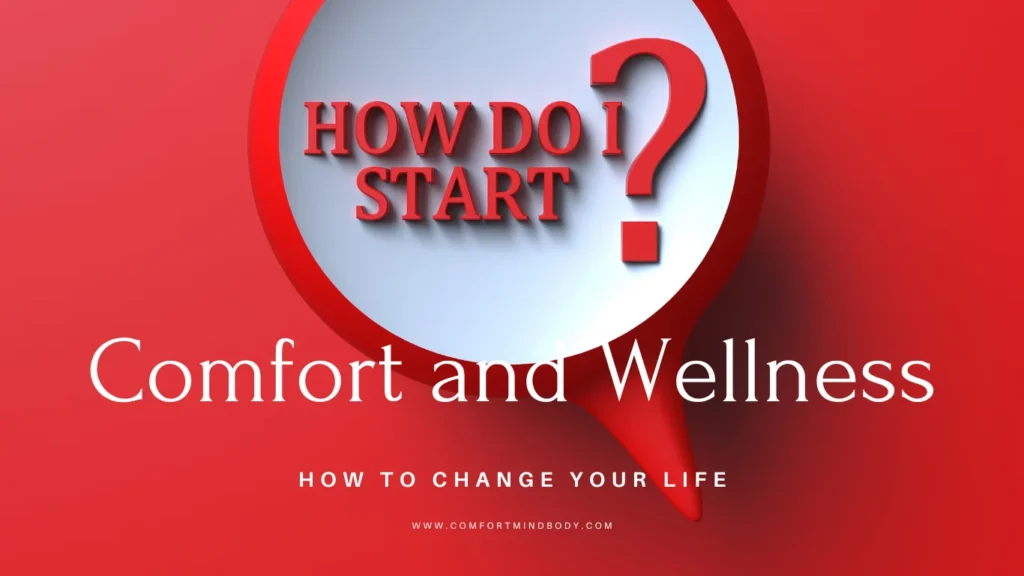Table of Contents
ToggleIntroduction:
Ketogenic Diet Plan for Rapid Weight Loss? The journey to weight loss can be a challenging one. It often involves a complete lifestyle overhaul, from diet to exercise habits. One approach that has gained popularity is the ketogenic diet plan. This low-carb, high-fat diet has been lauded for its rapid weight loss results. But what exactly is a ketogenic diet?
In essence, it’s a diet that triggers your body to switch from burning glucose to burning fat for energy. This metabolic state is known as ketosis. The ketogenic diet is more than just a weight loss tool. It’s a dietary approach that can bring about significant changes in your overall health.
From improved blood sugar control to enhanced mental clarity, the benefits of a ketogenic diet extend beyond the scale. However, like any diet, it’s not without its challenges. Meal planning, for instance, is crucial for success on a ketogenic diet. It involves careful consideration of macronutrient ratios and food choices.
Understanding how to calculate net carbs, for example, is key. It’s also important to know which foods are keto-friendly and which ones to avoid.
Ketogenic Diet Plan for Rapid Weight Loss
Another challenge is managing potential side effects. The initial transition into ketosis can sometimes lead to temporary symptoms, often referred to as the “keto flu”. But don’t worry. With the right strategies, these challenges can be effectively managed.
This article aims to provide a comprehensive guide to implementing a ketogenic diet plan for rapid weight loss. It covers everything from the science of ketosis to meal planning and preparation. You’ll also find tips for overcoming common challenges, as well as advice on incorporating exercise into your ketogenic lifestyle.
Plus, we’ll also share success stories from individuals who have achieved significant weight loss on a ketogenic diet. These real-life testimonials serve as inspiration and proof of the diet’s effectiveness.
Whether you are new to the ketogenic diet or have tried it before, this guide will help you. It gives you the knowledge and tools you need to succeed. So, are you ready to embark on your ketogenic diet journey? Let’s dive in.
Understanding the Ketogenic Diet
The ketogenic diet is a unique approach to weight loss. It’s not just about cutting calories or eating less. Instead, it’s about changing the type of fuel your body uses for energy.
Normally, your body relies on glucose, derived from carbohydrates, as its primary energy source. But when you drastically reduce your carb intake, your body has to find an alternative fuel. That’s where fat comes in.
In the absence of glucose, your body begins to break down stored fat into molecules called ketones. This metabolic state is known as ketosis.
But achieving ketosis requires more than just cutting carbs. It also involves increasing your intake of healthy fats and consuming a moderate amount of protein.
The typical macronutrient breakdown for a ketogenic diet is around 70-75% fat, 20-25% protein, and 5-10% carbohydrates. However, these ratios can vary depending on individual needs and goals.
What is Ketosis?
Ketosis is a metabolic state where your body uses fat, instead of glucose, for energy. It’s the cornerstone of the ketogenic diet. When you restrict carbs, your body depletes its glucose stores. As a result, it starts breaking down fat into ketones.
These ketones then serve as a new energy source for your body and brain. But achieving ketosis isn’t instantaneous. It usually takes a few days of low-carb eating for your body to make the switch.
During this transition period, you may experience some temporary side effects. These can include fatigue, headache, and irritability, often referred to as the “keto flu”.
But once you’re in ketosis, these symptoms typically subside. Many people report increased energy levels and improved mental clarity.
Benefits of a Ketogenic Diet
Ketogenic Diet Plan for Rapid Weight Loss
The ketogenic diet offers several potential benefits. Here are some key ones:
- Weight Loss: The ketogenic diet has been shown to help people lose weight effectively. This is largely because it helps you feel full, reduces calorie intake, and boosts metabolism.
- Better Blood Sugar Control: Eating fewer carbs can help control and prevent high blood sugar. This makes the ketogenic diet a useful option for managing type 2 diabetes.
- Enhanced Mental Clarity: Some people report improved focus and concentration on a ketogenic diet. This is likely due to the steady supply of ketones to the brain.
- Reduced Inflammation: The ketogenic diet may lower inflammation. This can help with many health issues, like heart disease and arthritis.
- Better Heart Health: The ketogenic diet is high in fat, but it promotes healthy fats. These can help improve heart health by lowering cholesterol levels.
Potential Risks and How to Mitigate Them
Ketogenic Diet Plan for Rapid Weight Loss
While the ketogenic diet has many benefits, it’s not without potential risks. Here are some common concerns and how to address them:
- Nutrient Deficiencies: The ketogenic diet limits some food groups. This can cause a lack of important nutrients like fiber, calcium, and potassium. To mitigate this, focus on consuming a variety of nutrient-dense, keto-friendly foods.
- Keto Flu: The initial transition into ketosis can cause flu-like symptoms, including fatigue, headache, and nausea. Staying hydrated, replenishing electrolytes, and getting enough sleep can help manage these symptoms.
- Digestive Issues: A sudden change in diet can cause digestive issues like constipation. Consuming enough fiber and staying hydrated can help prevent this.
- Cholesterol Levels: The ketogenic diet can help heart health, but it may raise LDL (bad) cholesterol in some people. Regular check-ups with your healthcare provider can help monitor this.
- Long-Term Sustainability: Some people find it challenging to stick to the ketogenic diet long-term. To make it more sustainable, try a flexible approach. One option is the cyclical ketogenic diet. This diet includes times when you eat more carbs.
Always talk to a healthcare provider before starting any new diet plan, including the ketogenic diet.
Planning Your Ketogenic Diet
Ketogenic Diet Plan for Rapid Weight Loss
Planning is key to success on the ketogenic diet. It’s not just about what you eat, but also about how much and when.
Understanding the macronutrient breakdown of your meals is crucial. You need to know how to calculate net carbs and identify keto-friendly foods.
You also need to be aware of foods to avoid on keto. This can help you make informed choices and stay on track. Let’s delve into these aspects in more detail.
Macronutrient Breakdown
Ketogenic Diet Plan for Rapid Weight Loss
The ketogenic diet is high in fat, moderate in protein, and low in carbs. But what does this mean in terms of your daily food intake? Typically, about 70-75% of your daily calories should come from fat. This includes both saturated and unsaturated fats.
Protein should make up around 20-25% of your daily calories. It’s important to consume enough protein to maintain muscle mass, but not so much that it prevents ketosis.
Carbohydrates should account for only 5-10% of your daily calories. Remember, the goal is to limit carbs to encourage your body to enter ketosis. Here’s a simple breakdown:
- Fat: 70-75% of daily calories
- Protein: 20-25% of daily calories
- Carbs: 5-10% of daily calories.
Calculating Net Carbs
Understanding net carbs is crucial for a ketogenic diet. But what are net carbs? Net carbs are the total carbohydrates in a food minus the fiber. This is because fiber is a type of carbohydrate that your body can’t digest.
So, it doesn’t raise your blood sugar levels or interfere with ketosis. To calculate net carbs, use this simple formula:
Net Carbs = Total Carbs – Fiber
For example, if a food has 10 grams of total carbs and 4 grams of fiber, its net carbs would be 6 grams.
Keto-Friendly Foods to Include
Ketogenic Diet Plan for Rapid Weight Loss
There are plenty of delicious and nutritious foods you can enjoy on a ketogenic diet. Here are some to include in your meal plan:
- Fats and Oils: Avocados, olives, coconut oil, butter, and ghee.
- Protein: Eggs, meat, poultry, fish, and tofu.
- Vegetables: Leafy greens, broccoli, cauliflower, zucchini, and bell peppers.
- Dairy: Cheese, cream, and unsweetened yogurt.
- Nuts and Seeds: Almonds, walnuts, flax seeds, and chia seeds.
- Beverages: Water, herbal tea, and black coffee.
Foods To Avoid:
Ketogenic Diet Plan for Rapid Weight Loss
Just as there are foods to embrace on keto, there are also foods to avoid. These are typically high in carbs and can hinder your progress.
Here are some foods to limit or avoid:
- Grains: Bread, pasta, rice, and oats.
- Starchy Vegetables: Potatoes, sweet potatoes, and corn.
- Fruit: Most fruits, except small portions of berries.
- Legumes: Beans, lentils, and peas.
- Sugary Foods: Candy, cookies, soda, and fruit juice.
- Alcohol: Most beers and sweet wines, as well as sugary cocktails.
Remember, the goal is to keep your carb intake low enough to maintain ketosis. So, it’s important to check food labels and track your net carb intake.
Meal Planning and Preparation
Meal planning and preparation are key to staying on track with a ketogenic diet. It can help you avoid last-minute food choices that might kick you out of ketosis.
Having a plan also makes grocery shopping easier. You’ll know exactly what to buy, which can save you time and money.
Let’s look at a sample 7-day ketogenic diet plan, some meal-prepping tips, and a few keto-friendly recipes.
A Sample 7-Day Ketogenic Diet Plan
Ketogenic Diet Plan for Rapid Weight Loss
Here’s a simple 7-day ketogenic diet plan to get you started. Remember, you can adjust this plan based on your personal preferences and nutritional needs.
Day 1:
- Breakfast: Scrambled eggs with spinach and feta cheese
- Lunch: Grilled chicken salad with olive oil dressing
- Dinner: Baked salmon with asparagus
- Snack: A handful of almonds
Day 2:
- Breakfast: Avocado and bacon omelet
- Lunch: Tuna salad with celery and mayo
- Dinner: Steak with sautéed mushrooms and green beans
- Snack: Celery sticks with almond butter
Day 3:
- Breakfast: Greek yogurt with chia seeds and walnuts
- Lunch: Shrimp stir-fry with bell peppers and broccoli
- Dinner: Pork chops with cauliflower mash
- Snack: A small portion of berries
Day 4:
- Breakfast: Smoothie with spinach, avocado, protein powder, and almond milk
- Lunch: Chicken Caesar salad
- Dinner: Meatballs with zucchini noodles and marinara sauce
- Snack: A handful of macadamia nuts
Day 5:
- Breakfast: Scrambled eggs with smoked salmon and cream cheese
- Lunch: Beef and vegetable stir-fry
- Dinner: Baked cod with lemon butter sauce and asparagus
- Snack: Cucumber slices with guacamole
Day 6:
- Breakfast: Chia pudding with almond milk and a small portion of berries
- Lunch: Chicken and avocado salad with olive oil dressing
- Dinner: Lamb chops with sautéed spinach
- Snack: A handful of olives
Day 7:
- Breakfast: Omelette with mushrooms, cheese, and spinach
- Lunch: Salmon salad with cucumber, tomatoes, and mayo
- Dinner: Grilled chicken with broccoli and cheese sauce
- Snack: A small portion of dark chocolate
Tips for Meal Prepping on Keto
Ketogenic Diet Plan for Rapid Weight Loss
Meal prepping can be a game-changer on a ketogenic diet. Here are some tips to help you get started:
- Plan your meals for the week ahead. This includes breakfast, lunch, dinner, and snacks.
- Make a shopping list based on your meal plan. Stick to it to avoid impulse purchases.
- Choose a day for meal prep. Many people find the weekend to be a good time.
- Cook in bulk. This can save you time during the week.
- Use portion containers to store your meals. This can help you control your portion sizes.
- Freeze meals for later. This can be a lifesaver when you’re short on time.
- Keep it simple. You don’t need to make complicated recipes to eat well on keto.
Keto Recipes for Breakfast, Lunch, and Dinner
Here are some simple and delicious keto-friendly recipes to try:
Breakfast:
- Avocado and Bacon Omelette
- Greek Yogurt with Chia Seeds and Walnuts
- Smoothie with Spinach, Avocado, Protein Powder, and Almond Milk
Lunch:
- Grilled Chicken Salad with Olive Oil Dressing
- Tuna Salad with Celery and Mayo
- Chicken and Avocado Salad with Olive Oil Dressing
Dinner:
- Baked Salmon with Asparagus
- Steak with Sautéed Mushrooms and Green Beans
- Grilled Chicken with Broccoli and Cheese Sauce
Remember, the key to a successful ketogenic diet is variety. Don’t be afraid to try new recipes and experiment with different foods.
Managing Side Effects and Overcoming Challenges
Ketogenic Diet Plan for Rapid Weight Loss
Starting a ketogenic diet can come with its own set of challenges. You may experience side effects, social pressures, and weight loss plateaus.
But don’t worry. With the right strategies, you can overcome these hurdles and stay on track. Let’s discuss how to deal with the keto flu, handle social events, and overcome weight loss plateaus.
Dealing with Keto Flu
When you first start a ketogenic diet, you may experience symptoms known as the “keto flu”. These can include fatigue, headache, irritability, and nausea.
This happens as your body adjusts to burning fat for fuel instead of carbohydrates.
Here are some tips to help you manage keto flu symptoms:
- Stay hydrated. Drink plenty of water throughout the day.
- Replenish electrolytes. Sodium, potassium, and magnesium can help reduce symptoms.
- Eat enough fat. This can help your body transition to ketosis more smoothly.
- Get plenty of sleep. Rest is important for recovery.
- Take it easy with exercise. Light activities like walking can be beneficial.
Remember, the keto flu is temporary. Once your body adapts to ketosis, the symptoms should subside.
Handling Social Events and Dining Out
Ketogenic Diet Plan for Rapid Weight Loss
Social events and dining out can be challenging on a ketogenic diet. But with a little planning, you can navigate these situations with ease. Here are some tips:
- Check the menu ahead of time. Look for keto-friendly options.
- Don’t be afraid to make special requests. Most restaurants are accommodating.
- Avoid sauces and dressings. They often contain hidden sugars.
- Stick to simple dishes. Grilled meats and vegetables are usually a safe bet.
- Be mindful of portion sizes. It’s easy to overeat when dining out.
Remember, it’s okay to enjoy yourself. If you stray from your diet, just get back on track with your next meal.
Overcoming Plateaus and Staying Motivated
Weight loss plateaus are common on any diet, including keto. But don’t let this discourage you. Here are some strategies to overcome plateaus:
- Reassess your calorie intake. As you lose weight, your calorie needs decrease.
- Check your macronutrient ratios. Make sure you’re eating enough fat and not too much protein.
- Incorporate exercise. This can help boost your metabolism.
- Try intermittent fasting. This can help kickstart weight loss.
- Be patient. Weight loss is a slow process.
Staying motivated can be tough, especially when progress is slow. But remember, every small step brings you closer to your goal. Celebrate your victories, no matter how small. And remember, you’re not just losing weight – you’re gaining health.
Exercise and the Ketogenic Diet
Ketogenic Diet Plan for Rapid Weight Loss
Exercise is a crucial part of any weight loss plan, including the ketogenic diet. It can help you burn more calories, improve your health, and feel better overall.
But what role does exercise play in ketosis? And what types of workouts are best for those on a keto diet? Let’s dive in and find out.
The Role of Exercise in Ketosis
Exercise can help your body get into ketosis faster. This is because it depletes your body’s glycogen stores, forcing it to burn fat for fuel. But that’s not all. Exercise also increases your metabolic rate, helping you burn more calories throughout the day.
It’s important to note that while exercise can help you get into ketosis, it’s not necessary. You can achieve ketosis through diet alone. However, combining a ketogenic diet with regular exercise can provide additional health benefits. These include improved cardiovascular health, better mood, and increased energy levels.
Remember, it’s always important to listen to your body. If you’re feeling tired or unwell, it’s okay to take a break from exercise.
Recommended Workouts for Keto Dieters
When it comes to exercise on a ketogenic diet, variety is key. A mix of cardio, strength training, and flexibility exercises can provide the best results. Here are some workouts to consider:
- Walking or jogging. These are great for beginners and can be done anywhere.
- High-intensity interval training (HIIT). This involves short bursts of intense exercise followed by recovery periods.
- Strength training. Lifting weights can help you build muscle and increase your metabolic rate.
- Yoga or Pilates. These can improve flexibility and reduce stress.
Remember, the best exercise is the one you enjoy and can stick with. Start slow and gradually increase the intensity as your fitness improves. And don’t forget to warm up before each workout and cool down afterward. This can help prevent injuries.
Finally, always consult with a healthcare provider before starting a new exercise program. This is especially important if you have any underlying health conditions.
Success Stories and Testimonials
Ketogenic Diet Plan for Rapid Weight Loss
One of the most inspiring aspects of the ketogenic diet is the success stories. Real people have achieved real results, transforming their health and their lives.
These stories provide motivation and proof that the ketogenic diet can work. They show that with dedication and the right plan, weight loss is possible. Let’s take a look at some of these success stories.
Real People, Real Results
Ketogenic Diet Plan for Rapid Weight Loss
Meet Sarah. She struggled with her weight for years. Traditional diets didn’t work for her. Then she discovered the ketogenic diet. In just six months, she lost 30 pounds. But it wasn’t just about the weight loss. Sarah also noticed improvements in her energy levels and mood.
Next, there’s John. He was pre-diabetic and needed to make a change. John turned to the ketogenic diet. He not only lost weight but also reversed his pre-diabetes. John says the ketogenic diet has given him a new lease on life.
Then there’s Lisa. She suffered from PCOS and struggled to lose weight. After starting the ketogenic diet, Lisa lost over 50 pounds. Her PCOS symptoms also improved significantly. Lisa believes the ketogenic diet has been a game-changer for her health.
These are just a few examples of the many success stories out there. Each one is a testament to the power of the ketogenic diet.
Remember, everyone’s journey is unique. What works for one person may not work for another. But these stories show that with the right plan and mindset, the ketogenic diet can lead to significant weight loss and health improvements.
It’s important to consult with a healthcare provider before starting a ketogenic diet. They can provide guidance and ensure the diet is safe for you.
Remember, the ketogenic diet is not a quick fix. It’s a lifestyle change. But as these success stories show, it’s a change that can lead to incredible results.
Additional Considerations for a Ketogenic Diet
Ketogenic Diet Plan for Rapid Weight Loss
While the ketogenic diet can be highly effective, it’s not a one-size-fits-all solution. There are several additional considerations to keep in mind.
These include adapting the diet to different lifestyles, managing sleep and stress, and transitioning off keto safely. Let’s delve into these topics.
Adapting Keto for Different Lifestyles
The ketogenic diet can be adapted to suit various lifestyles. This includes vegetarians, vegans, and those with food allergies or sensitivities.
For vegetarians, the focus should be on low-carb plant-based proteins. These include tofu, tempeh, and seitan. Eggs and dairy products are also good options if they’re part of your diet.
For vegans, the challenge is a bit greater. But it’s still possible to follow a vegan keto diet. Plant-based fats like avocados, nuts, and seeds are key. Vegan protein sources like tofu and tempeh are also important.
For those with food allergies or sensitivities, it’s about finding safe alternatives. For example, if you’re allergic to nuts, focus on seeds and other healthy fats.
The Importance of Sleep and Stress Management
Sleep and stress management are crucial for any weight loss plan. This is especially true for the ketogenic diet. Poor sleep can affect your body’s insulin sensitivity. This can make it harder to lose weight.
Aim for 7-9 hours of quality sleep per night. Establish a regular sleep schedule and create a calming bedtime routine. Stress can also hinder weight loss. It can lead to emotional eating and disrupt your metabolism. Find healthy ways to manage stress. This could be through exercise, meditation, or hobbies.
Transitioning Off Keto Safely
Ketogenic Diet Plan for Rapid Weight Loss
If you decide to transition off the ketogenic diet, it’s important to do so safely. This can help prevent weight regain and other issues. Start by gradually increasing your carb intake. Add in more fruits, vegetables, and whole grains.
Monitor your body’s response. If you notice weight gain or feel less energetic, adjust your carb intake accordingly. Remember, transitioning off keto doesn’t mean returning to unhealthy eating habits. Continue to focus on whole, nutrient-dense foods.
Consult with a healthcare provider or dietitian during this transition. They can provide personalized guidance and support.
In conclusion, the ketogenic diet is a powerful tool for weight loss. But it’s important to consider these additional factors for long-term success.
Conclusion and Next Steps
Ketogenic Diet Plan for Rapid Weight Loss
The ketogenic diet is a powerful tool for weight loss. But it’s more than just a diet. It’s a lifestyle change that can improve your health in many ways. From better blood sugar control to improved mental clarity, the benefits are vast.
But like any lifestyle change, it requires commitment. It’s not always easy, but the results can be worth it. Remember, it’s not about perfection. It’s about progress.
Every meal is a new opportunity to nourish your body. So, every workout is a chance to get stronger. Nevertheless, every day is a step closer to your goals.
So, are you ready to embrace the ketogenic lifestyle?
Need more keto diet information? Read here: 10 Best Diets of All Time: Unveiling the Secrets to Achieving Your Health Goals.
Embracing a Ketogenic Lifestyle for Long-Term Health
The ketogenic diet is not a quick fix. It’s a long-term commitment to health.
- First, It’s about making choices that support your well-being, day in and day out.
- Second, It’s about learning to enjoy foods that nourish your body and mind.
- Third, It’s about discovering new ways to stay active and fit.
- Plus, It’s about listening to your body and giving it what it needs.
- It’s about celebrating small victories and learning from setbacks.
- Additionally, It’s about finding a balance that works for you.
- Finally, It’s about embracing a lifestyle that makes you feel good, inside and out.
So, are you ready to start your ketogenic journey? Remember, the journey of a thousand miles begins with a single step.
Affiliate Disclosure:
The links contained in this product review may result in a small commission. This goes towards supporting our research and editorial team and please know we only recommend high-quality products.
Note: This article is for informational purposes only and is not intended to diagnose, treat, or cure any disease. Always consult a healthcare professional before taking any supplement or making any changes to your diet or lifestyle.








